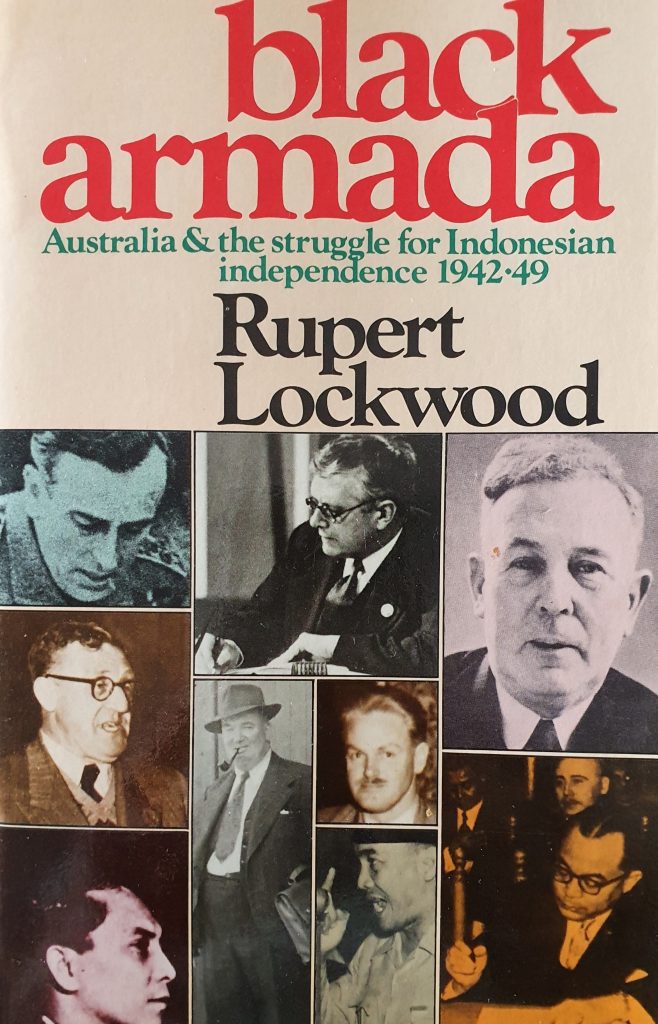While there were strong voices for greater forms of independence for Indonesia, the conservative hard-line Dutch Government was only prepared to provide more participation of Indonesians in local government structures but it would still have to be under the final control of the Netherlands, they had no interest in discussing independence and were adamant to restore colonialism. As a result, animosity against the Dutch increased. In Australia.
What must have played a role in the back of the minds of the Dutch politicians was that a significant part of Dutch wealth depended on the income from the Netherlands East Indies (NEI) colony and when after WWII the Netherlands itself was close to bankrupt (the US Marshal Aid prevented this from happening) they were desperate to restore the situation where they again could reap the financial benefits from their colony. At the same time many Dutch companies had a vested interest in seeing colonialisation being restored.
The uncompromising Dutch re-colonialisation attitude only fuelled a broader pro-independence attitude among the ‘Indonesians’ in Australia. They formed the largest part of the in all 20,000 Dutch people that had evacuated to Australia after the Fall of NEI. Those soldiers and sailors who wanted to leave the Dutch service, were treated as deserters, and were given harsh punishments by the Dutch authorities, and jailed in Long Bay, Loveday (South Australia), Cowra (central NSW) and Liverpool (Sydney). The NEI government-in-exile had their own police and military force in Australia, who had near full autonomy in relation to their ‘subjects’, they could wear and use weapons.
In 1943 the Trade Union and the Communist Party became involved in the plight of the political prisoners the Dutch had brought to Australia. These prisoners (known as the Digulists) became a leading intellectual force for the independence movement of Indonesia in Australia.
This political situation became even more complicated after the Japanese surrender in August 1945. The NEI had not been liberated by the allies as the Dutch were unprepared to immediately take over control from the Japanese. They were just recovering from their own Nazi occupation. Australia together with Britain were tasked to step into this vacuum and take over administrative control of NEI from the Japanese.
This was not something the Australian Government was really looking for. It was still reeling from the British unpreparedness of the defence of Australian in 1942. Now it was confronted with the unpreparedness of the Dutch to take-over control of NEI and the volatile situation in NEI.
However, the Australian troops successfully took control of a large part of NEI, without any serious casualties. This buoyed the Australian Government and they considered taking a broader regional role.
This situation saw a short-lived political movement aimed at a more permanent Australian occupation (take-over) of some parts of NEI to create ramparts to the north for their own protection. They were looking at for example occupying Borneo, Portuguese Timor, West Papua and other islands to Australia’s north. However, these ‘secret’ ambitions were resented by the Dutch and quashed by the Americans.
By the time the war ended the trade unions were ready to assist the ‘Indonesians’ in obtaining a greater say in their future. They were planning a boycott of Dutch shipping/ They needed a legitimate trade union issue so their political support was linked to demands that any deferred pay and retention of the Indonesian workforce would be based on the non- colonial wage rates as they had been negotiated in Australia. The Dutch refused to go into such an agreement.
As a result, on 20 September 1945, the first embargo on Dutch ships was proclaimed in Brisbane. Indonesian seaman and staff, walked off six ships scheduled to return 800 Dutch official and troops to the NEI, they were supported by the Brisbane wharfies. As an indication how strange things can get, the Australian Government allowed 400 Dutch troops from Camp Columbia to act as strike breakers supported by State and Commonwealth Police.
These strikes were followed by Freemantle, a few days later Sydney and Melbourne followed (hospital ships were exempted).
The boycott – known as the Black Armada – was not limited to Dutch shipping but also applied to air transport, trade, repairs and storage. As reported by Rupert Lockwood. over the two-year period it effected: nine corvettes, 2 submarines, 7 submarine chasers; 36 Dutch merchant ships, passenger liners and troop transport ships; two tankers and 35 other oil industry craft; 450 power and dumb barges, lighters and surf-landing craft; aircrafts and land transport vehicles. Furthermore, two British troopships and three Royal Navy vessels were blacklisted. In all 559 vessels and 1.000 land crafts have been identified as being affected by the ban of the 31 trade unions involved in the boycott.
While the Dutch tried to hang on to their political power, the war had changed the world, people in this part of the world wanted to get rid of their British, French and Dutch overlords.
The USA and Australia already before the war supporter an anti-colonisation policy. Throughout the war that created tensions but the war effort to defeat Japan did put a lid on that. This totally changed after the war. The American President Franklin Roosevelt suddenly died; he had a special relationship with the Netherlands as his family was from Dutch decent. His successor Harry Truman did not have such emotional ties and was in favour of letting the Indonesian make their own decisions about their future. The Netherlands became more and more internationally isolated.
The Dutch fought two so called Police Actions against the Indonesians, but finally had to give in and in 1949 signed the handover agreement. It is only since the last decade that the Dutch are acknowledging their colonial past and discussing the wrongdoings of that period.

See also: The CIA Report on the Break-Up of Colonial Empires 1948
Return to Camp Columbia Heritage Park, Wacol, Brisbane TOC
.
